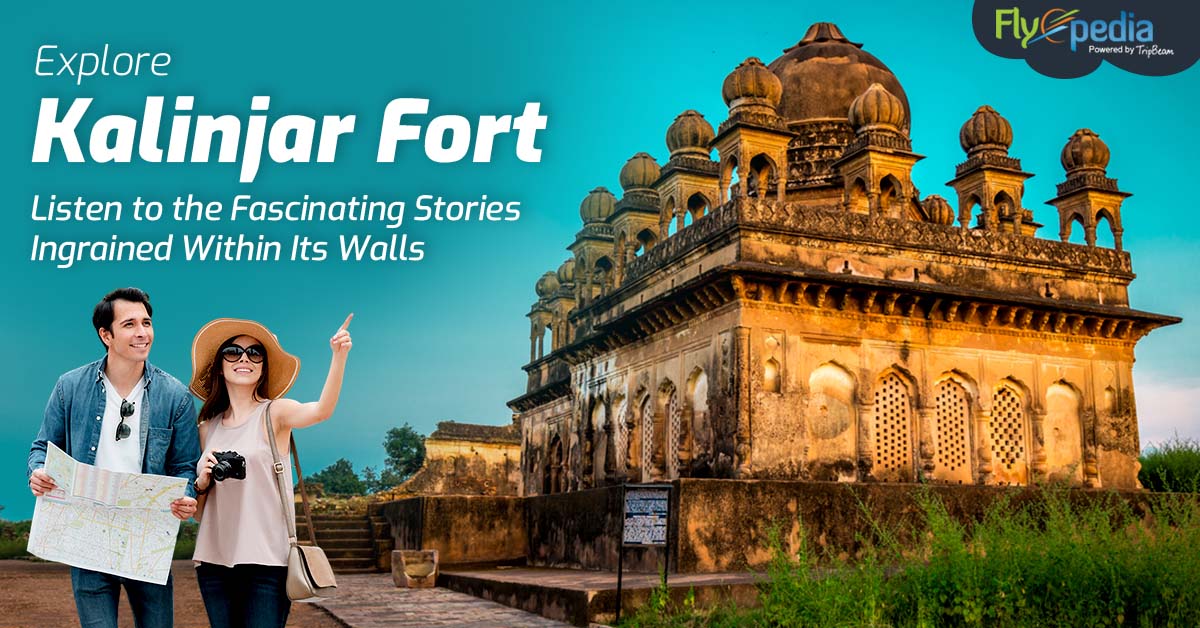For those who aren’t from India, ancient Indian forts might just look like old walls and ruins. But for us, they hold our culture, heritage, and history. Long ago, our ancestors used these forts cleverly in battles, combining their intelligence with the strength of the forts to protect our homeland and achieve great victories. Among these forts, Kalinjar Fort stands out for its remarkable architecture.
Kalinjar Fort isn’t just an old building; it’s a symbol of resilience. It has withstood wars, repelled invaders, and safeguarded our people. It’s like a guardian of our past, with every stone holding a story.
We have all the information you need to understand Kalinjar Fort’s significance if you plan to visit it shortly. Continue reading to learn more about this remarkable building, whose origins remain a mystery. Also, check out flyopedia prior to your trip and then book Canada to India business class flight deals at discounted prices.
Where to Find Kalinjar Fort?
Kalinjar Fort sits in Tarahati village, part of Bandra district in Uttar Pradesh. The whole area around the fort is often called Kalinjar village after it. You can’t miss this impressive structure once you arrive. It looms tall on a solitary hill at the far end of the Vindhya mountain range. From its highest point, you get a sweeping view of Bundelkhand, a significant region during the Rajput era.
Though it is believed the fort was constructed between the 3rd and 5th centuries, its exact origins remain uncertain. Its strategic location atop the hill allowed for a panoramic view, making it a vital spot for the king’s soldiers to defend the territory. Additionally, you can browse flyopedia.com to check out USA to India flight tickets in just one tap.
Kalinjar in Hindu Lore
Samudra Manthan is a significant event reported in the Vishnu Purana. It all started when the gods lost their powers due to a misfortune involving Lord Indra’s mount, Airavata, and Rishi Durvasa. This made them anxious because the demons, led by Bali, seized control of the three realms – earth, ocean, and sky. In their desperation, the gods addressed Lord Vishnu for advice, who suggested a diplomatic approach since they were powerless and fighting a war would only lead to disaster.
So, the gods and demons agreed to participate in Samudra Manthan, the churning of the ocean. The deal was that the winner would gain access to the divine Amrit, which would emerge during the process.
During the churning of the ocean, the deities and demons encountered a problem: a poisonous substance emerged before the divine elixir, Amrit, could be retrieved. They couldn’t halt the process but needed to escape the danger posed by this lethal poison. In their distress, Lord Shiva intervened and consumed the poison. Instead of letting it harm him, he contained it in his throat, turning his neck blue. This act earned him the name Neelkanth, meaning “the one with the blue neck.”
Legend has it that Lord Shiva visited Kalinjar Fort, where he neutralised the poison, rendering it harmless. Consequently, the fort became a sacred site. The name “Kalinjar” translates to “defeat of death,” symbolising the triumph over mortality. Given the fort’s strategic advantage in defence, it can be said that it repeatedly triumphed over death to safeguard kingdoms, rulers, and their armies.
A Glimpse into History of Kalinjar
Throughout history, various dynasties have vied for control over the area surrounding Kalinjar Fort. Among them, the Chandelas hold a prominent position, their influence deeply ingrained in the fort’s very foundations. From the Gupta Empire to the Mughal reign, Kalinjar has seen the rise and fall of empires, each leaving a lasting impression on its sacred grounds.
However, it was the Chandelas who left the most enduring legacy within Kalinjar’s history. Known as the “Kalanjaradipati,” or lords of Kalinjar, they successfully defended the fortress against Mahmud of Ghazni’s invasions and resisted the advances of Qutubbudhin Aibek, displaying unwavering resolve against the passage of time.
Over the centuries, Kalinjar has stood steadfast, silently observing the spectacle of conquest and the errors of empires. From the opulence of the Mughal courts to the upheaval of colonial rule, its walls have witnessed the grand drama of history unfold.
Key Features and Architectural Design of Kalinjar Fort
As you enter the centre of Kalinjar, its stunning architecture will welcome you within the verdant trees. Its winding passageways are home to historical relics such as mosques, temples, and palaces, all of which, with their exquisite carvings and profound spiritual importance, tell a different tale about India’s legacy.
As you explore further, you will come across the remarkable bastions of Kalinjar, a testament to its military prowess. These towering structures, named after Hindu gods, stand tall against the backdrop of centuries of conflict and bravery. They embody a sense of divine protection, reflecting the unwavering faith that bolstered Kalinjar’s defenders.
Perhaps the most astonishing feature of Kalinjar is its persistence. Despite the passage of time and the challenges inflicted on it by conquerors, it stands firm – a silent guardian, keeping the secrets of its illustrious past.
Conclusion:
As you walk through the legendary hallways of Kalinjar Fort, let its whispers of history guide you, urging you to discover the mysteries housed within its ancient walls. For in Kalinjar, the past and present intersect, creating a tapestry of stories that transcend time. Last but not the least, go on to flyopedia and avail your book last minute flight to India from Canada.
Also Read: Discover 6 Impressive Forts Near Ahmedabad Worth Exploring


